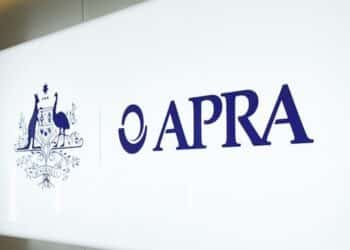In its submission to the Financial System Inquiry (FSI), the industry body reiterated its longstanding concern that research houses have been ineffective in preventing or providing sufficient warning about the $37 billion worth of “product failure, impaired structures or frozen funds” since 2005, all of which has negatively impacted “consumers’ ability to save for retirement”.
“The previous Labor government erroneously levelled the blame for this environment at the product commission level in the financial advice industry and failed to address key systemic problems we believe are responsible for these catastrophic conditions,” the submission states.
“Adviser behaviour certainly needed to be modified but we contend these failed funds should not have been on the market in the first place and they should have not been allowed to get distribution traction with advisers and self-directed consumers.”
The AIOFP contends that the “very powerful and influential position to dictate distribution outcomes” held by the research houses means that payment for ratings by these organisations creates “massive conflicts and interest and distortions”.
Citing the US Congress finding that “shopping around” for favourable ratings by financial product manufacturers was a contributor to the conditions that led to the GFC, the submission proposes an alternative system.
That system would implement a levy on advisers, nominally listing a hypothetical annual fee of $1,000, which would fund a “panel of research houses” which would “examine new PDSs before market release i.e. business model sustainability, director profile and background, likelihood of success etc”, thereby effectively ending the need for research houses to “seek funding from product manufacturers to survive”.
“FOFA has not addressed these weaknesses,” the submission states, speaking directly to the issues of PDS confusion and conflicted research house ratings. “Product failure history will continue to repeat itself unless meaningful structural change is implemented,” it said.
Would you be willing to pay $1,000 to fund non-conflicted research? Have your say below




maybe the product providers should pay asic not force me as an adviser to fund the due diligence of a product..after all doctors don’t pay for drug trials…
[quote name=”not so old”]It’s interesting that an organisation of less than 105 members (from their own awebsite) can have so much clout as an “industry body”.[/quote]
Sorry, I fail to see the relevance. Does that affect their submission? Why hasn’t the FPA raised this issue?
Yes of course I would, for far too long product manufacturers have been buying favourable research to help sell their investments.
Look at what happened in America when research houses rated sub-prime securitised debt products as triple AAA rated?
When will the Government learn that there is a “conflict of interest” when banks and big business can buy whatever rating they want to push their our products.
It’s like asking the foxes to count how many chicken are in the coop, or asking your hairdresser if you need a haircut, isn’t it?
Regulators it’s time to wake up to these rorts, if the buyer or their advocate paid for the research it is likely to be un-biased and tell you the truth.
Ron Kucharski
Heino
I would think its strategy first and use the products to suit the strategy secondly. The point is that there MUST be some reliance on research houses to deliver quality research without any bias, otherwise we would all need our own research analyst and that ain’t feasible for most practices.
Whatever research house provides an assessment it is still incumbent on the adviser to assess it an validate it for themselves before recommending a particular product. Focusing first on the client and assessing their circumstances and determining an appropriate strategy before considering a particular product to deliver that strategy rather than determining the product and then working back to the strategy
Most definitely not, this will only add to the cost of advice which will inevitably be passed through to consumers through increased advice fees. The cost of running a compliant advice business is already too high.
Surely there must be some ex-researcher around that will blow the whistle. C’mon where are you?
The whole Industry is corrupt and confusing. Poor Advisers are the guinea pigs facing the music.I just wonder how many research houses have not been influenced by the product providers.
The headline blames the Agent and the text the Research House, typical, it is always the Agents fault as they are the front line and the only contact with the client.
Agents only use approved products, that are “well” researched and then do their own due diligence on what they are able to access in an attempt to confirm the products suitability to the client.
It looks like this is a no win game, with the advantage of hindsight.
those 105 members are CEOs and represent 3000 advisers. also an important counterpoint agst other ‘professional bodies’ that are very cosy with the insto groups
I no longer see the need for managed funds research. If fund managers were all made to come out with a standardised research document on their websites for all to read, that would suit most fine. No research update equals no inflows and ASIC enquiry. I would not pay $1000p.a. for a largely irrelevant service. Merely attaching a fund research report to an SOA might satisfy dealer group compliance, but that’s all. Would be a lot safer for adviser and client to diversify well and focus on objectives.
It’s interesting that an organisation of less than 105 members (from their own awebsite) can have so much clout as an “industry body”.
Do doctors and pharmacists pay a fee for the research and testing of new drugs? No they don’t, the TGA levies fees and charges to the manufacturers and distributors.
The $1000 idea is absurd.
Perhaps Research House investigation fees should be standardised and based on the cost of the research (i.e. not for profit). Then the researchers can make money by selling their product (too many give it away).
Does this include the iSelect business model as well? That is a payment for a quasi recommendation.
The AIOFP paper I have not read, though the summary given above reiterates my own personal views and those of my peers in conversation.
I would be willing to pay $1,000 to fund a additional non-conflicted research source. I use a non conflicted research house in addition to my own research and the time I invest is not economical.
Finally there is some discussion about the elephant in the room. The research houses have a lot to answer to in regard of failed funds during the GFC. Licencees and advisers recommend these products in good faith based on these recommendations.
We pay a lot more now for conflicted research.
So $1000 per annum for unconflicted research seems very attractive….at least on the surface.
And what makes you think the end result won’t be the same. Research houses now have to justify their rating and lately there have been some examples of “previously” well rated funds being given their correct rating. $1000 for what? 1K for every adviser is going to make a big payday for an “expert panel”??? No. No. No
Disagree with the tone of the findings as it shows a complete lack of understanding and relevance to the Australian market. For starters most if not all advisors are dependent on Ratings Agencies as they have no autonomy to recommend and that’s because of legislation and insurance. Secondly Ratings Agencies tout themselves as the font of knowledge however they were corrupted by the process of fees for ratings. What chance did an adviser have. The Ratings Agencies also compounded the problem by employing Junior inadequately prepared people to review. For example I run a credit fund and one ratings agency confused corporate bonds with Private equity debt and refused to acknowledge the mistake. That group is currently being sued by the Councils. Is it any wonder we had people left in the lurch when Ratings Agencies had no idea how to rate or what they were rating